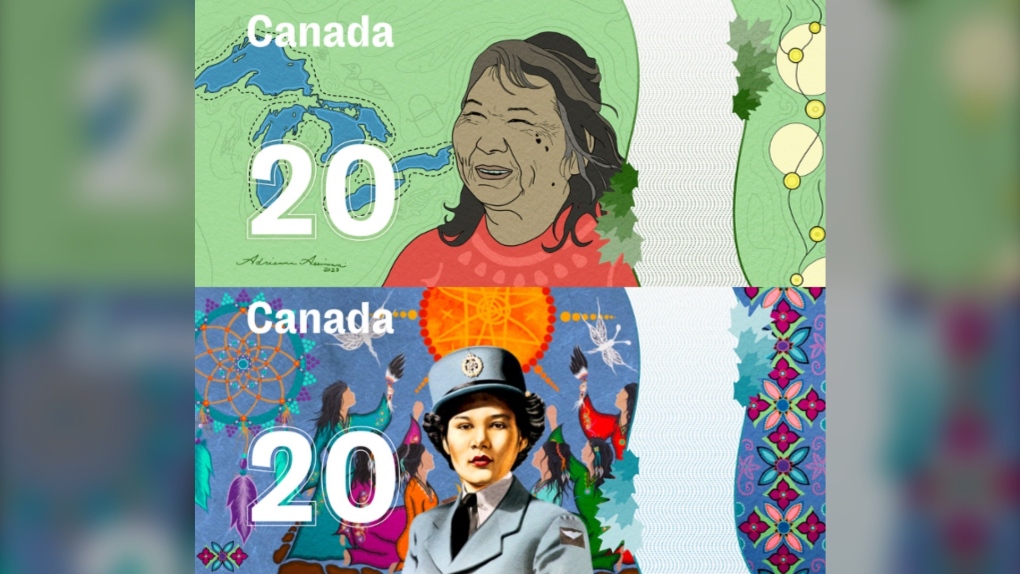
Indigenous people lived on the land we now call Canada long before paper money was even invented, but an Indigenous person has never before been honoured on a banknote.
That’s something a new campaign is hoping to change.
The Native Women’s Association of Canada launched “Change the Bill” in January, a campaign aiming to get an Indigenous woman on the $20 bill.
“We hope to influence the Bank of Canada in a positive way to actually achieve that goal of … an Indigenous woman on that $20 bill, and get to people’s hearts,” Lynne Groulx, CEO of the Native Women’s Association of Canada, said on Wednesday.
“The idea has come about because, as you know, Indigenous women have made contributions in Canada, very historic and important ones, and we’re at a time where a lot of people are talking about reconciliation, and we just felt that this was a beautiful way — reconciliation through art, featuring these amazing stories of these women who have made these wonderful contributions.”
More than 20,000 people have signed a petition so far hoping to bring the project to the attention of the central bank.
As part of the project, Indigenous artists were commissioned to reimagine the $20 bill with the faces of both notable Indigenous women who have made significant contributions to history, as well as inspiring figures from individual artists’ communities.
One of the women featured is Margaret Pictou, an Indigenous women who joined the Royal Canadian Air Force in World War II and was featured on recruitment posters to encourage women to enlist.
“She was a photographer … her role was to take photographs of bridges — she had to literally swing upside down from an airplane to get these aerial shots,” Groulx said. “Later on in her life, she became the first Indigenous female chief in Canada, and then she was also a strong advocate for her language, Mi’kmaw language in her community.”
Another design honours activist Cindy Blackstock.
“She is the leading advocate for Indigenous children in this country,” Groulx said. “She filed a case of discrimination against the government of Canada more than 15 years ago and was successful in having that brought to the Human Rights Tribunal. And a settlement award was ultimately in place for discrimination against Indigenous children on reserve.”
A third design honours Josephine Mandamin, who walked 17,000 kilometres around the shorelines of the Great Lakes carrying a bucket of water to raise awareness of water pollution and the need to protect our waterways.
“There’s healing through art,” Groulx said. “Reconciliation can happen through art. It transcends different cultures.”
The campaign is hoping to reach 25,000 signatures.
More information on the campaign is available on its website, where art prints of the reimagined $20 bill can also be purchased.